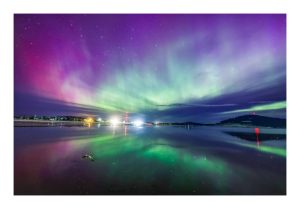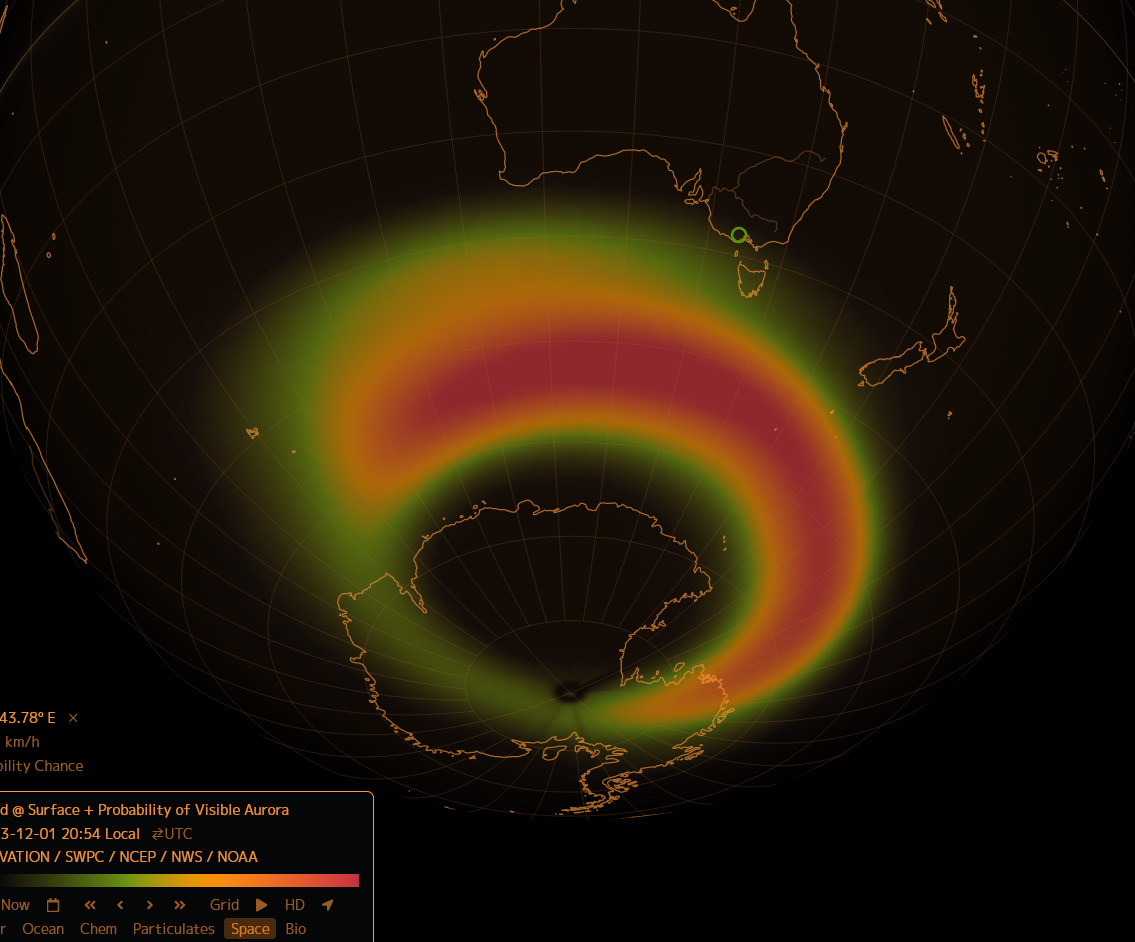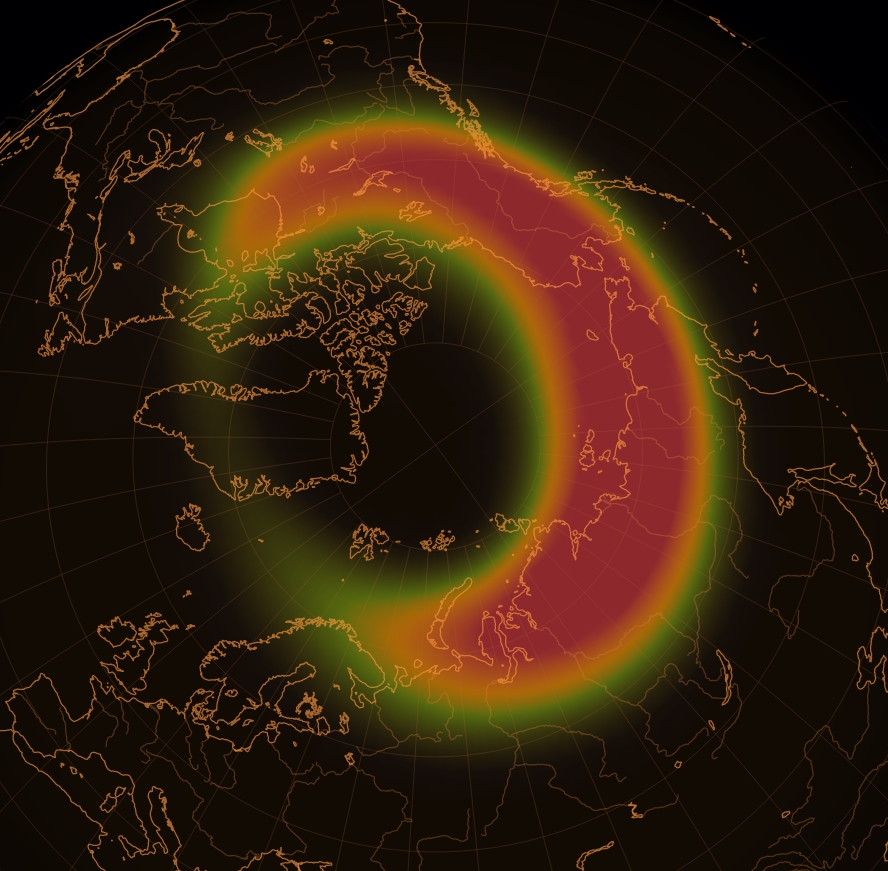
Paul Hoelen, Mortimer Bay, Hobart, Tasmania
UPDATE: I want to see an aurora, but living at 32S in Perth, Australia, this is like hoping to see the NorthernLights in Jerusalem or San Diego. No luck for me tonight, but there was one report from Geraldton 400km north of us (28.7S). Hopefully sometime in the next year during the solar max…
A quick note to say a CME just hit Earth, and some people may be able to see an aurora tonight that wouldn’t normally see one. A severe Kp 7 Geomagnetic storm is in progress (BOM estimate). Kp 7 is the bottom end of what is classed as a “severe” geomagnetic storm with Kp 8 and 9 being bigger (and even rarer).
Reports on X (Twitter): #AuroraAustralis #Auroraborealis
Southern Hemisphere data — BOM 3 day Geomagnetic Indices | Northern Hemisphere: SpaceWeatherLive
A CME JUST HIT EARTH: However, it might not be the “Big One.” A CME hit Earth’s magnetic field on Dec. 1st at 0021 UT, jolting the USGS magnetometer in Frericksberg, Virginia, by 36 nT. This could be the first of two CMEs en route to Earth. NOAA forecasters expect a significant Cannibal CME (composed of multiple storm clouds) to reach Earth midday on Dec. 1st, possibly sparking strong G3-class geomagnetic storms. Aurora alerts: SMS Text
Space.com –– The rapid Earth-bound CME left the sun on Nov. 29 during a powerful M9.8-class solar flare eruption. But it isn’t alone. The speedy plasma outburst will merge with several slower upstream CMEs that left the sun a day earlier (Nov. 28), creating a “Cannibal CME” that will likely trigger a strong geomagnetic storm akin to a Nov. 5 event that supercharged auroras and STEVE around the world.
Nullschool has predictions for visibility (but has seemed to underestimate the odds lately — people have reported and taken photos from spots that in theory should not be able to see anything.) Hard to predict.
I’m no guru on these things, but I’d love to see one. At 32 South, Perth is usually too close to the equator to see anything.
Update: Data appears most useful at Space Weather Live. Forum discussions here. Magnetometers here. The event is fading now — though still classed as “Severe”. It was southward earlier but the “northward pointing” Bz field now make the aurora less spectacular. But the next year at high solar activity will provide more opportunities…

